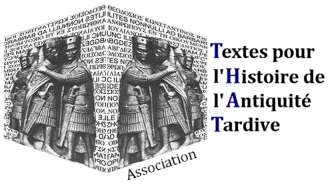NB : Pour lire l’intégralité des articles, voir ci-contre la rubrique Téléchargements.
ARTICLES
1.FABRIZIO BORDONE
Quattro pentametri per une finale: sui versi 238-241 dell’Epithalamium di Paolino di Nola – p. 1-14.
Abstract: The paper looks at the final verses (238-241) of Paulinus of Nola’s Epithalamium, a curious sequence of four pentameters, and proposes restoring the regular structure of the text in elegiac couplets: v. 239 could be considered as an alternative to v. 238 (either by the poet or an erudite interpolator) and vv. 240-241 as a rhythmic-metrical subscriptio in which the poet addresses bishop Memor, the father of the newlyweds.
2. GIUSEPPE RAMIRES
Servius Aen. IX-XII. The edition of C. E. Murgia and R. A. Kaster: considerations and proposals (second part) – p. 15-44.
Abstract: The article is the second part of an extensive discussion around the critical edition of Servius’ Commentary on books IX-XII of Virgil’s Aeneid, edited by C.E. Murgia and published posthumously in 2018, by R.A. Kaster. The first part was published in the “Bulletin critique” section of RET, 8, 2018-2019, pp. 217-265.
3. BENOÎT CHAZAL
La Vie de Caracalla dans l’Histoire Auguste – p. 45-82.
Résumé: La Vie de Caracalla, dans l’Histoire Auguste, offre l’exemple d’un déploiement de ressources rhétoriques multiples et variées au service d’une condamnation. Inspiré par le modèle suétonien, le biographe s’approprie la matière documentaire de ses prédécesseurs historiographes, grecs et latins, pour élaborer un blâme sans appel du fils de Septime Sévère. Cet article se propose d’étudier, sans prétendre atteindre l’exhaustivité, les procédés épidictiques qui sont à l’œuvre dans cette biographie et les choix de composition qui ont présidé à sa rédaction.
4. ANNICK STOEHR-MONJOU
Augustin, Enée et le fils prodigue dans les Confessions – p. 83-113.
Abstract: In this article, we study how Augustine constructs the figure of Aeneas in chapter 13 of book 1 of the Confessions (conf. 1, 13, 20-22). We analyse the occurrences of this name, the discrete insertion of words he pronounces in Virgil’s Aeneid and the insistence on his wandering (error/errare). Unlike the separate studies either on Aeneas or on the prodigal son, we show the link between Aeneas and the prodigal son: it prepares Augustine’s identification with the lost and found son of the para- ble in the Gospel of Luke, which is essential in the Confessions.
.
